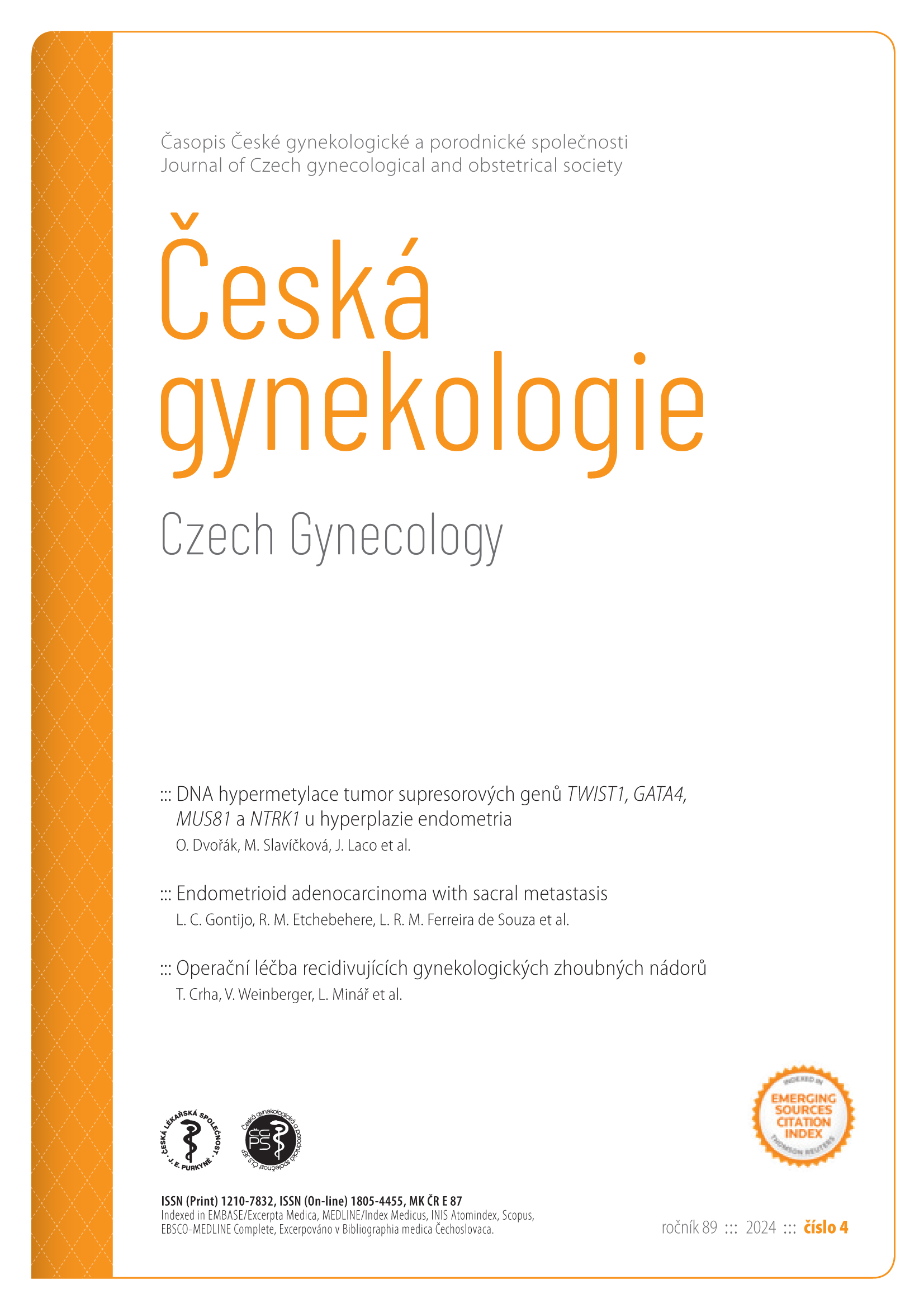Preoperative discrimination between uterine myomas and sarcomas
Keywords:
myoma, uterine sarcoma, ultrasound, magnetic resonance imaging, biopsy, biomarkersAbstract
The narrative review article is focused on the strengths and limitations of modern imaging methods in the preoperative differential diagnosis of uterine mesenchymal tumours. In order to tailor the surgical procedures, imaging methods, namely ultrasound and magnetic resonance imaging (MRI), should be taken into account as well as clinical symptoms, age, and fertility plans. On ultrasound scans, uterine sarcomas have the appearance of large, usually solitary tumours of non-homogenous structure with irregular cysts, ill-defined outline borders (interrupted capsule), absence of calcifications with acoustic shadowing, and moderate to rich internal vascularisation. Rapid growth between follow-ups or atypical growth in peri- or post-menopause is also a sign of malignancy. On MRI, uterine sarcomas are characterized by irregular borders, hyperintense areas on T1-weighted and T2-weighted images, and central non-enhancing necrotic areas. On diffusion-weighted imaging (DWI/MRI), sarcomas exhibit markedly restricted diffusion but there is a significant overlap with some variants of fibroids. Core-needle or hysteroscopic biopsy can be used preoperatively if suspicious features are detected on ultrasound or MRI scans, particularly before myomectomy if fertility preservation is required or when conservative management is considered in asymptomatic women. Other imaging methods, such as positron emission tomography fused with CT (PET-CT) or computed tomography (CT) have limited role to distinguish uterine sarcomas from myomas and are suitable only for staging purposes. The importance of tumour markers including lactate dehydrogenase in preoperative work-up have not been verified yet. Conclusion: Uterine sarcomas can be distinguished from much more common myomas based on a combination of malignant features on ultrasound or MR imaging. In these suspicious cases the type and extent of surgery should be adjusted, avoiding intraperitoneal morcellation, which could lead to iatrogenic tumour spread and worsening of the patient’s prognosis.


